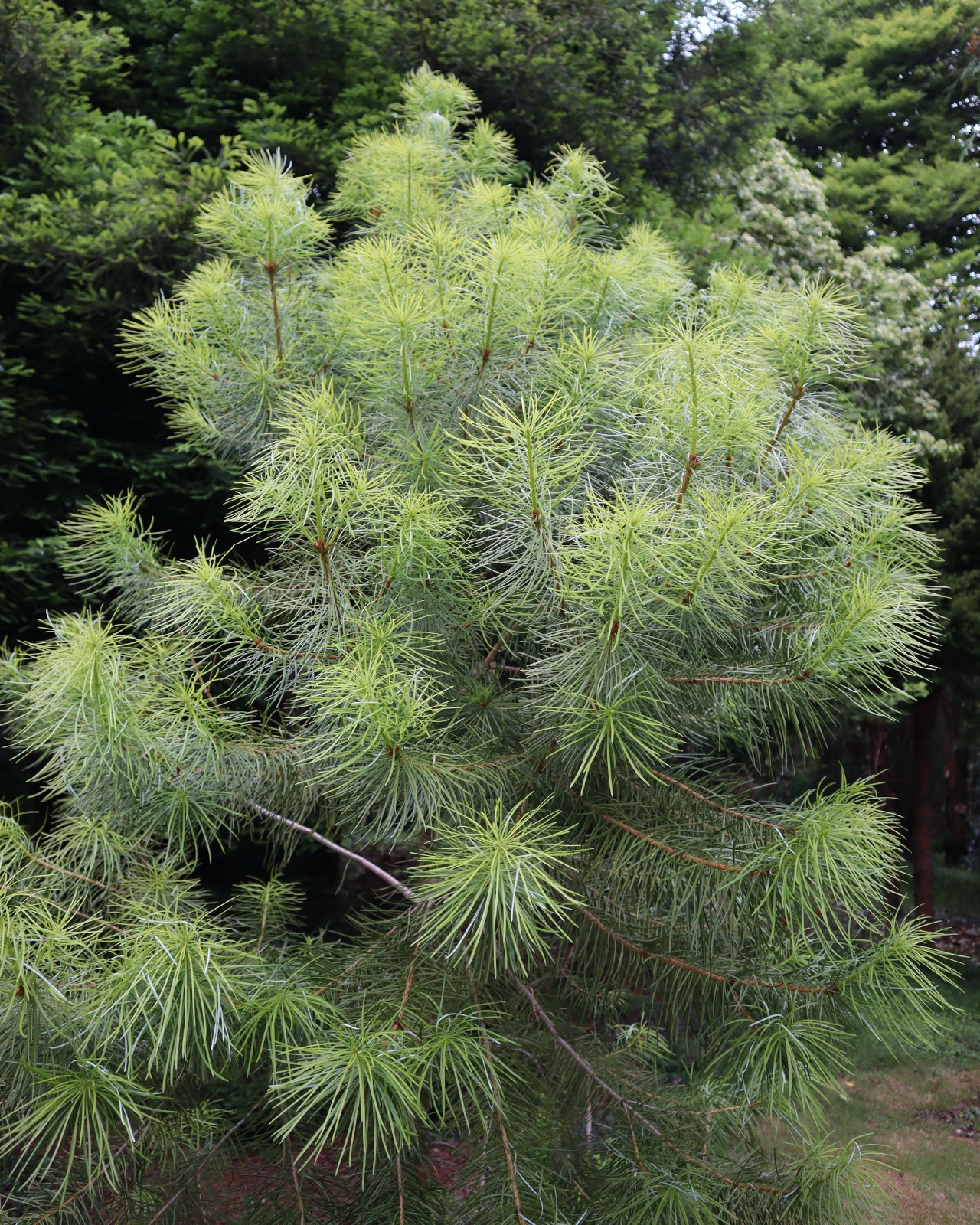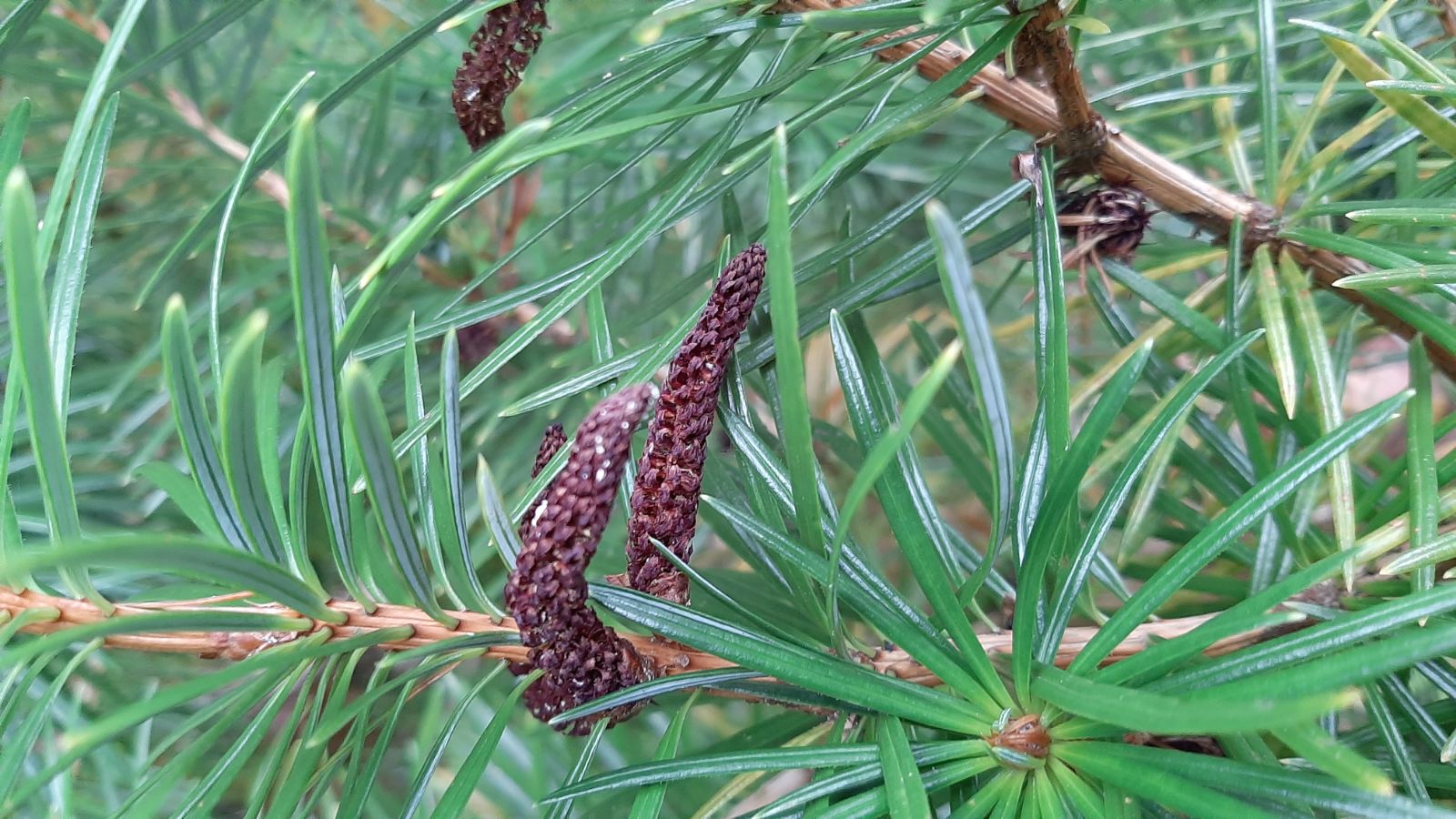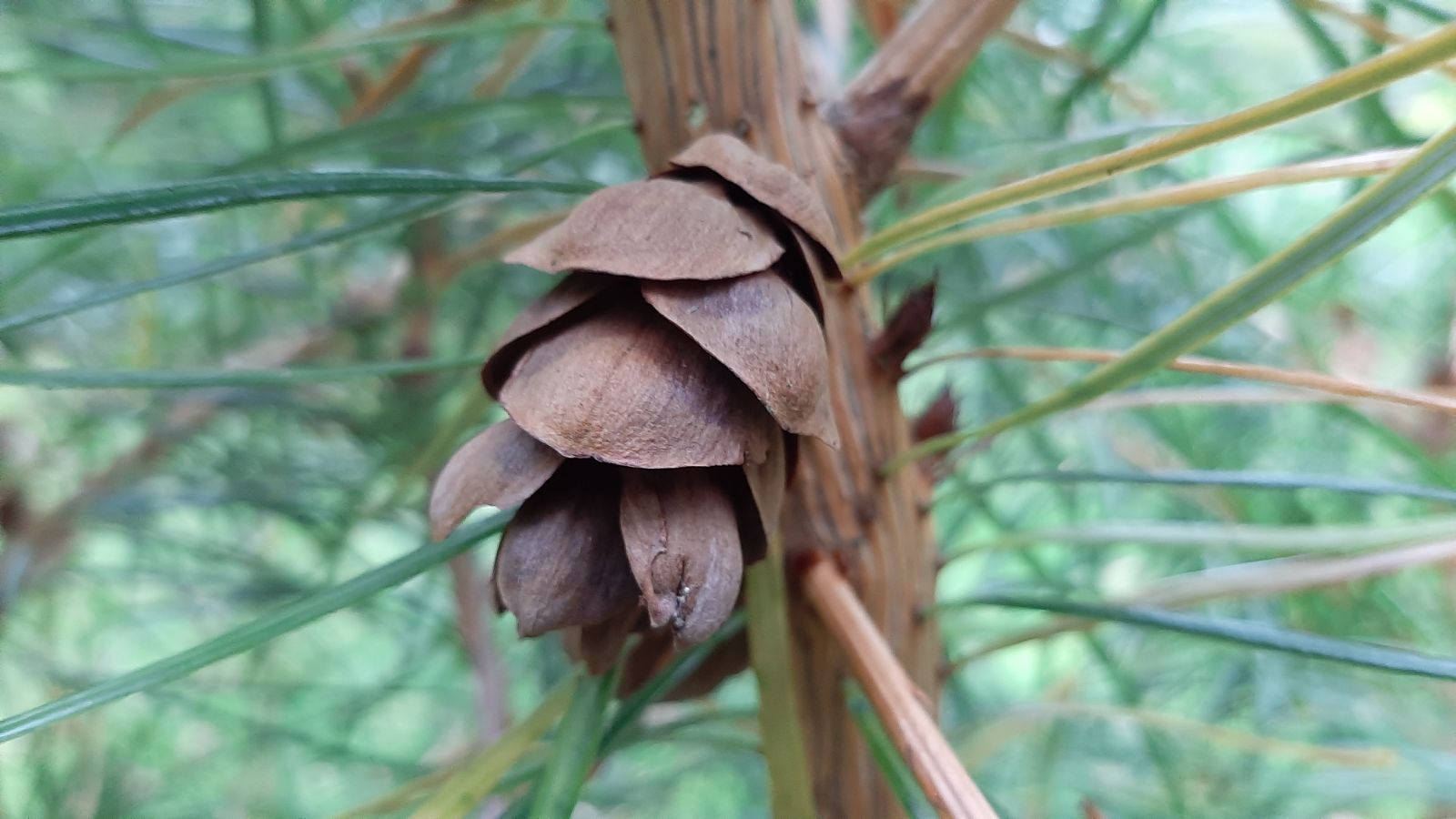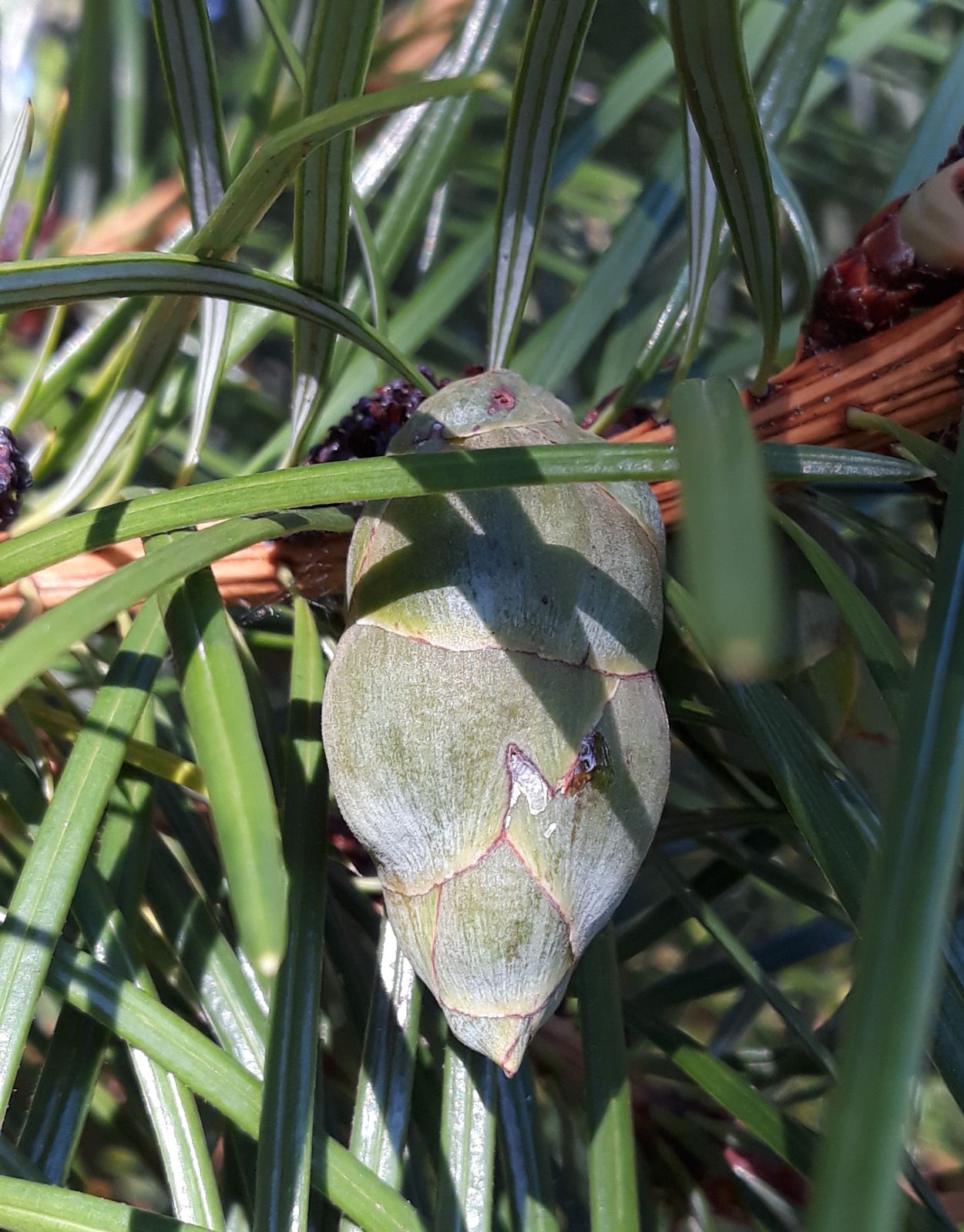Cathaya argyrophylla
Credits
Article from New Trees by John Grimshaw & Ross Bayton
Recommended citation
'Cathaya argyrophylla' from the website Trees and Shrubs Online (treesandshrubsonline.
Genus
Synonyms
- Cathaya nanchuanensis Chun & Kuang
Other taxa in genus
Tree to 20 m, trunk columnar, 0.4–0.6 m dbh. Bark smooth, grey, becoming scaly, may break into large irregular plates on the lower bole. Crown irregular, pyramidal, rather open. Branchlets slender, yellowish, becoming grey, conspicuously grooved, with circular or angular leaf scars; shoots dimorphic as in Larix, though less well defined; young shoots slightly pubescent, later glabrous; vegetative buds not resinous. Leaves spirally arranged, leaf density increasing towards the stem apex, (1.8–)2.8–4.5(–5.5) × 0.25–0.3 cm, straight, petiolate, margins slightly recurved, apex obtuse. Male strobili lateral, pendent, near shoot apex, 3–6 cm long, yellow, surrounded by a whorl of light brown scales. Female cones lateral, at right angles to the shoot (neither erect nor pendent), short-pedunculate or nearly sessile, ovoid to oblong with an acute apex, 3–5 × 1.5–2.5 cm, greenish, turning orange-brown later. Seed scales 13–16, ovate to orbicular, 1.5–2.5 × 1–2 cm. Bract scales triangular, 0.5–0.8 cm long, with a conspicuous point, included. Seeds olive-green with pale green spots, obovoid, 0.5–0.6 × 0.3–0.4 cm; wings cuneate or obovate, 1–1.5 × 0.4–0.6 cm. Farjon 1990, Fu et al. 1999c. Distribution CHINA: northeast Guangxi, northern Guizhou, southern Hunan, southeast Sichuan. Habitat Evergreen, sclerophyllous forest or broadleaved, deciduous forest, between 1200 and 1800 m asl. USDA Hardiness Zone 7. Conservation status Lower Risk (IUCN); but despite this assessment, Cathaya has limited fertility (12.2% of cones with no seeds) and survival rates (seed germination rate in field, 21%). In China it is considered to be one of the eight most endangered plant species there (Ge et al. 1998), and access to material of the tree is (supposedly) strictly controlled. Illustration Krüssmann 1985b, Farjon 1990, Fu et al. 1999c; NTx, NT224, NT425. Cross-reference K62. Taxonomic note Cathaya is probably closely related to Larix and Pseudotsuga. Like Larix, its shoots are dimorphic, though the cones are on the longer shoots rather than the short shoots. The cones are very similar to those of the Asian species of Pseudotsuga, though the bract scales are short and unlobed (Frankis 1988).
In an article posted on the Quarryhill website, Bill McNamara (2007a) tells a lively tale of being taken to see a stand of Cathaya argyrophylla in a remote area of Sichuan, and of the difficulties placed in his party’s way before they got there. On arrival they found that access to the outcrop on whose top the trees were growing had been rendered almost impossible by the erasure of irregularities that would permit anyone to climb the cliff. A makeshift ladder did the trick, and eventually it was possible to admire the trees. As this story suggests, Cathaya is officially regarded as an important Chinese endemic, and access to material is supposedly strictly controlled. Despite this, however, the species is now available in commerce both in the United Kingdom and in the United States, and the website of the Oregon State University Department of Horticulture (1999–2008) lists it as a landscape plant.
In the United Kingdom seedlings have been distributed to a few reliable growers from the International Conifer Conservation Programme at Edinburgh, the first accessions there dating to 1998. All of these are still very small, and it is difficult to record much about such young plants. Larger plants are growing in the United States, however, and here the growth habit is more apparent. The long, flattened needles are a dull olive-green and grow rather densely on the shoots, giving something of a foxtail appearance. They show little sign of the silvery white undersurface that gives the tree its specific name. A good specimen of 1.8 m at Plant Delights Nursery, Raleigh, North Carolina was producing vigorous new growth when seen in June 2006, and seems to thrive in the southern heat and humidity.









